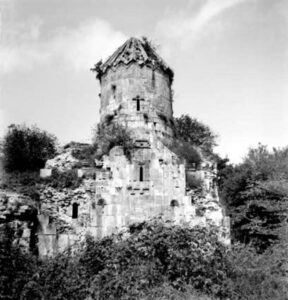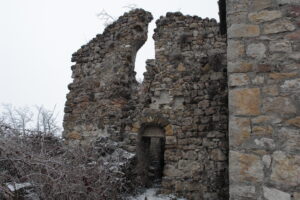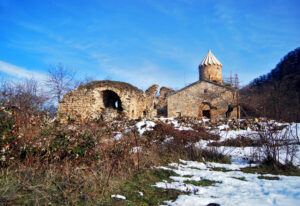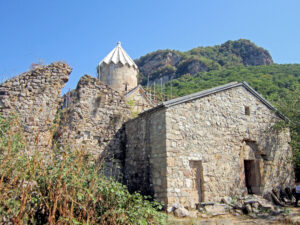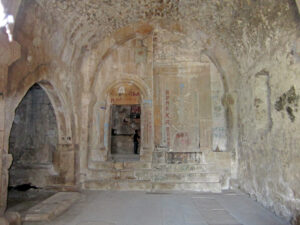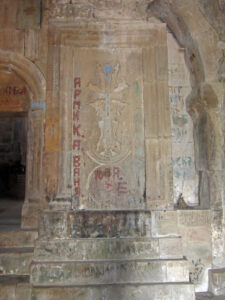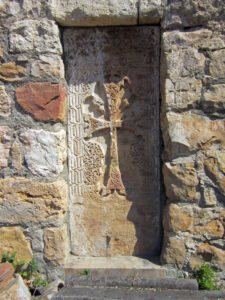Gtchavank
Hadrut Province, Togh village
The third most famous monastery in Artsakh is Gtchavank. It is located in a forested valley between the villages of Togh and Tumi, on the northern slope of Mt. Toghasar in the Hadrut region. The monastic complex comprises two churches, a vestibule and several other buildings. The complex had a protective wall, the northern part of which has been preserved. Gtchavank served as a famous administrative and spiritual center. In the 9th century Prince Yesayi Abu Musen ruled the region from the impregnable citadel nearby.
It was the center of the 10th-century Dizak kingdom as well. Between the years 1241-1246, two brothers, Bishop Sargis and Bishop Vrtanes, moved here from Amaras and constructed the main church of Gtchavank on the site of the ancient church. It is a domed structure of modest proportions. On the internal walls of the church, there are engraved khachkars, one of which bears an inscription dated from 1000 AD. The second church lies to the north and shares a vestibule with the domed church. There are numerous khachkars throughout the complex with inscriptions dating from the 9th to the 19th centuries. Yet another old church lies further to the north of the main church. Gtchavank has been a center of vibrant cultural life over the centuries. It was the spiritual and cultural center of Dizak, and the episcopal see of the Diocese. The monastery houses many manuscripts prepared in Artsakh as well as numerous books copied in the local scriptorium. The Abbot Rev. Fr. Arakel Kostandyants his history here. This history has not been published in full; however, the section entitled «The Melikate of Dizak» was published in Vagharshapat in 1913. The manuscript is held in the Matenadaran.
Bibliography
«Diocese of Artsakh» (2009), Erevan, 411 pp.


